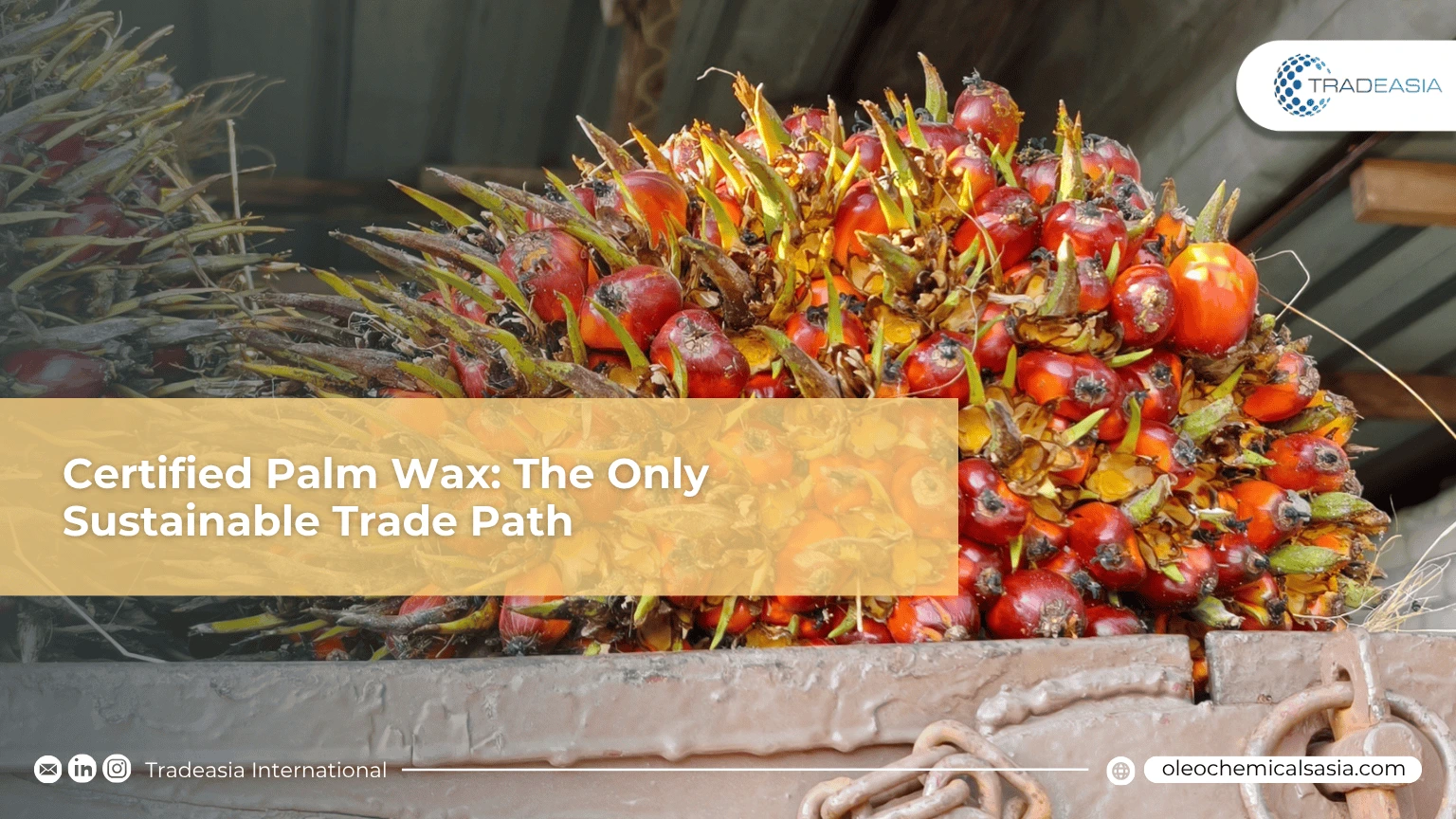The Non-Negotiable Edge: Why Certified Palm Wax is the Only Sustainable Trade Option from 2020 to 2040

Table of Content
- Certification: Securing Access to the Green Premium
- Competition: Outperforming Paraffin and Soy
In the increasingly regulated global marketplace, the competition for palm wax is no longer just about price; it’s fundamentally about compliance and sustainability. For the trading house or manufacturer aiming for secure, long-term contracts in the 2020–2040 window, certified sourcing is the single most critical factor for securing high-value market access. This demand for traceable products creates a protective moat around certified supply. A successful palm trading business needs partners with robust, verifiable supply lines. Tradeasia International operates on the principle that trust is the commodity—traceability is the tool.
Certification: Securing Access to the Green Premium
The regulatory climate in major importing regions, particularly the EU and North America, is tightening, making schemes like the Roundtable on Sustainable Palm Oil (RSPO) mandatory for premium sales. The production volumes underscore the seriousness of this compliance: in 2024, total certified sustainable palm oil (CSPO) production reached 16.2 million MT. More importantly for palm wax traders, the downstream consumption data for certified product in Europe and North America has aggressively surpassed 90% uptake. This high penetration means non-certified palm wax faces a near-total lock-out from the highest-margin consumer retail channels. Selling certified product is not a luxury—it’s the cost of entry for stable profits.
Competition: Outperforming Paraffin and Soy
Palm wax is strategically positioned in the ongoing battle between fossil-fuel and bio-waxes. While commodity paraffin wax still holds a large footprint (40% of the candle market), its inherent link to volatile crude oil prices and its petroleum origin makes it highly vulnerable to substitution. The collective Natural Waxes segment, growing at a faster 3.43% CAGR through 2030, is actively displacing paraffin. Here, palm wax competes with soy. Palm wax differentiates itself by offering superior material properties—higher melting points and better hardness—giving it a clear technical advantage over soy, especially in products requiring structural integrity. This versatility, combined with certifiable sustainability, ensures palm wax remains a superior value proposition. The candle wax market itself is still significant, expected to reach $4.96 billion by 2033 with a 3.7% CAGR, and certified palm wax will be key to capturing this sustainable demand segment. Trading companies that can consistently deliver this certified product will capture a larger share of the premium market, insulated from the lower-end commodity price wars.
Sources:
-
ACOP 2024: RSPO Market Trends Resilient Despite Global Challenges – RSPO: https://rspo.org/acop-2024-rspo-market-trends-resilient-despite-global-challenges/
-
Candle Wax Market Size & Opportunities Report, 2033 – Global Growth Insights: https://www.globalgrowthinsights.com/market-reports/candle-wax-market-110637
-
https://www.google.com/search?q=OleochemicalsAsia.com: https://www.oleochemicalsasia.com/

Leave a Comment